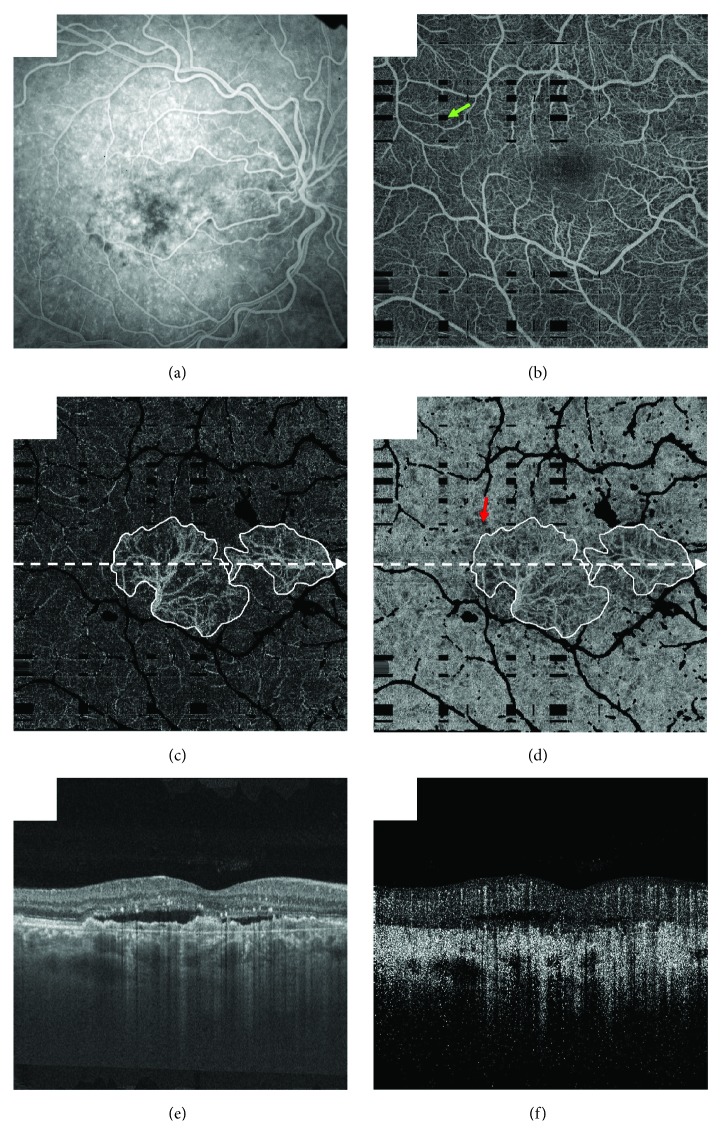Figure 2.
A 65-year-old patient with neovascular age-related macular degeneration (AMD) and treatment-naïve choroidal neovascularization (CNV). (a) Fluorescein angiogram. (b) Projection of the optical coherence tomography (OCT) angiography (OCTA) volume through the depths spanned by the superficial and deep retinal plexuses. The green arrow points to a black rectangular region, which, as a result of patient motion, has absent information (these images were formed by registering and merging orthogonally acquired volumes; at the intersection of motion artifacts in these orthogonal volumes, there is missing information). The field of view is 6 mm × 6 mm. (c) Projection of the OCTA volume through the depths spanned by the CNV lesion; white contours trace the lesion margin. (d) Projection of the OCTA volume from Bruch's membrane to 45 μm below; again, white contours trace the lesion margin, which appears due to projection artifacts. Note that there is choriocapillaris alteration extending beyond the lesion margin (e.g., arrow). (e) OCT B-scan extracted from the position indicated by the dashed white arrows in (c) and (d). (f) OCTA B-scan extracted from the same position. Note that in (b), (c), and (d), projection artifacts from larger overlying retinal vessels have been removed and are shown in black. OCT and OCTA volumes were formed by registering and merging two orthogonally scanned “x-fast” and “y-fast” volumes. Black rectangles in (c) and (d) correspond to intersections of motion in these x-fast and y-fast volumes.

